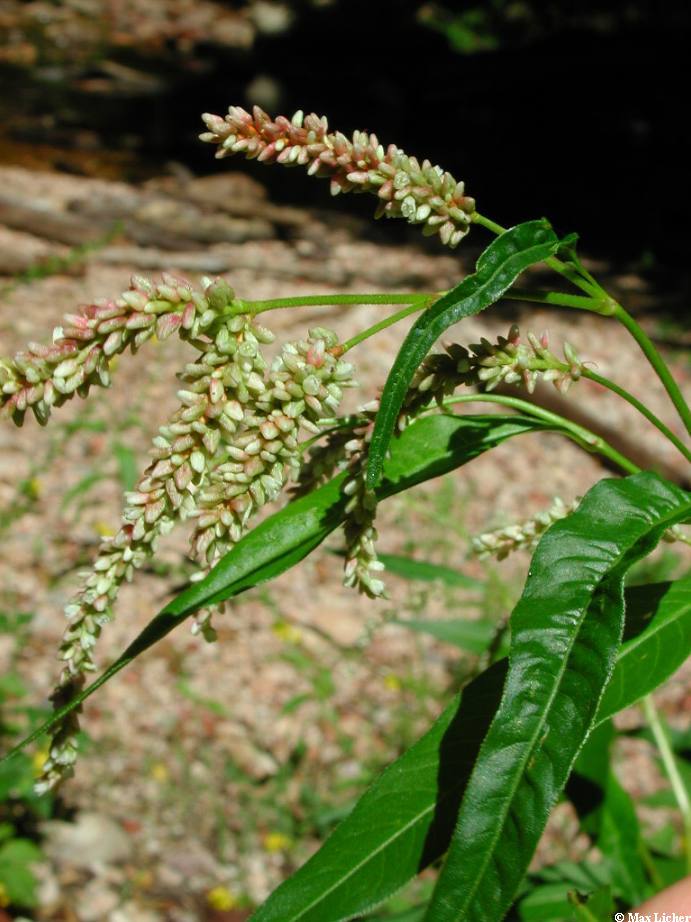|
Family: Polygonaceae |
Herbs, shrubs, or subshrubs, annual (perennial in P. striatulum), homophyllous or heterophyllous, sometimes heterocarpic; roots fibrous or woody. Stems prostrate to erect, glabrous, smooth or sometimes papillous-scabridulous. Leaves cauline, alternate (opposite in P. humifusum), petiolate or sessile; ocrea with distal part persistent, often hyaline, white or silvery, 2-lobed, chartaceous, glabrous, disintegrating into fibers, or disintegrating completely; petiole base articulated with ocrea or not; blade linear, lanceolate, elliptic, ovate, or subround, margins entire. Inflorescences axillary or axillary and terminal, spikelike, or flowers solitary; peduncle absent. Pedicels present or absent. Flowers bisexual, 1-7(-10) per ocreate fascicle, base not stipelike; perianth nonaccrescent, white or greenish white to pink, campanulate to urceolate, glabrous; tepals 5, connate 3-70% of their length, petaloid or sepaloid, monomorphic or, rarely, dimorphic, the inner usually flat, the outer flat or sometimes keeled and cucullate distally, sometimes of different length than the inner; stamens 3-8 (some may be reduced to staminodes); filaments distinct, free or adnate to perianth tube, glabrous; anthers whitish yellow, pink to purple or orange-pink, elliptic to oblong; styles (2-)3, mostly spreading, distinct or connate proximally; stigmas 2-3, capitate. Achenes included or exserted, yellow-green, brown, or black, unwinged, (2-)3-gonous, glabrous. Seeds: embryo curved. x = 10. Fls perfect or unisexual; pedicels jointed at or near the summit; tep (4)5(6), connate below; stamens 3-8; ovary flattened or trigonous, with 2-3 minute, usually capitate stigmas, the styles usually short or obsolete, separate or united; fr a lenticular or trigonous achene, wholly or in large part enclosed by the persistent perianth; embryo at one angle of the achene; annual or perennial herbs (seldom shrubs), commonly with well developed ocreae; fls borne in axillary clusters or terminal (often also axillary) spike-like racemes, or in terminal heads or panicles. Most of the several sections have been taken by some authors as distinct genera. Our spp. mostly flower from early or midsummer into fall. 200, widespread, mainly temp. Gleason, Henry A. & Cronquist, Arthur J. 1991. Manual of vascular plants of northeastern United States and adjacent Canada. lxxv + 910 pp. ©The New York Botanical Garden. All rights reserved. Used by permission. |


